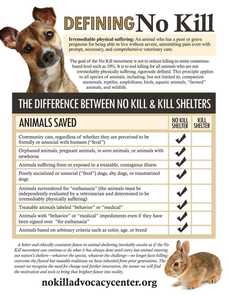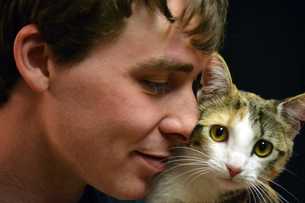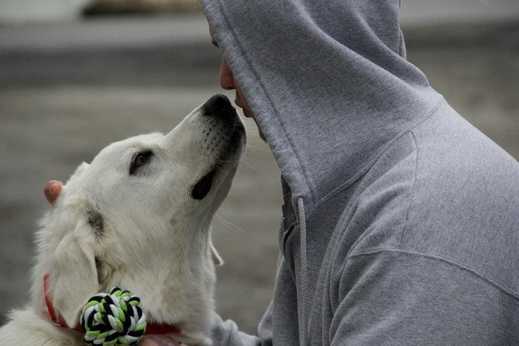|
As we wind down 2016, we wanted to take a look back at the year as a whole and hit on some of the highlights which have taken place. We’ve categorized them into "bad news" and "good news" categories. The Bad News  • We are still not a no kill community as a philosophical way of functioning because the city has yet to make a commitment to no longer destroy healthy and treatable animals. When we asked for that commitment during a meeting with City Administrator John Hamilton in June, we were told "no. The city will not commit to that." We presume this decision serves to give the city an "out" should some crisis arise or should there be some collapse of programs which have led to the current level of progress. We still believe that the city is in a perfect position to make a commitment in light of the progress which has been made. We do believe that the shelter needs to develop a disaster plan in the event of a mass-intake event (from a collector, puppy mill or dog fighter), but we believe that the city can in good faith commit to a standard and live up to that standard. • Healthy and treatable animals are still destroyed in the shelter. We honestly do not know how many savable animals were destroyed this year, but we have no doubt that this practice continues on at least a limited basis based on posts on the shelter's Facebook page and based on information we have from sources inside the shelter. We think that the number of healthy and treatable animals being destroyed is incredibly small compared to the numbers from the past, but the practice has not ended completely. The problem with this is that the shelter is reporting on euthanasia reports that animals were destroyed for reasons related to health or behavior. Not one "euthanasia" report we obtained this year honestly reported that healthy dogs were destroyed for space. The issue with this lack of transparency is that people presume ours is a no kill shelter when pets who are simply lost may actually still be at risk. Some would argue that we should not focus on individual instances of dogs being destroyed for space. Our counter to that argument is that it may not seem important until the dog destroyed for space is your beloved dog who simply got out of your fenced yard accidentally when you were out of town on vacation.  • Dogs continue to get sick after entering the shelter. The shelter has a history of dogs entering the shelter healthy and then acquiring upper-respiratory problems dating back many years. We have been told on multiple occasions that the inability to keep dogs healthy relates to the HVAC system. Our reply to that has been pretty clear: fix it. We see it as part of the ordinary functioning of any city department to seek and acquire funding for facilities upgrades. There have been no upgrades to the shelter related to the issue of sick dogs even though the problems have existed for years. Because the shelter is managed by a veterinarian, we know there is a public expectation that animasl will not get sick after entering the building. • People from outside our community continue to revise history, doing so unfairly and to the detriment of communities like ours. We have blogged on the topic of our history a few times this year not so much for the benefit of Huntsville but for the benefit of other places. We are contacted on a regular basis by people from other states asking how Huntsville got to this point and what steps we recommend others take. Florida, Illinois, California, Hawaii. As grassroots advocates, we do our best to help people not only understand what steps we took to help ours work toward becoming a no kill community, but what mistakes we made along the way. As Ryan Clinton, the Founder of FixAstin once said, "it's important not to change history because then you learn the wrong lessons." An organization called Target Zero which was active here for less than a year (and in a remote capacity) has declared that it got Huntsville "to zero" in less than a year and they can do something similar for other places as it goes around the country seeking new clients and using our city as an example. Target Zero did play a role here. What Target Zero fails to tell people is that by the time they arrived at our airport for a 2-day visit, the live release rate had gone from 34% to more than 70% in less than a year, all without their involvement and after we took the no kill subject to the public and to a new city administrator. Change was already taking place. There will always be disagreement about what led to that change. We are absolutely certain that but for the advocacy of No Kill Huntsville very little would have changed at all and the city may still be destroying the majority of the animals in the shelter while being answerable to no one. We point this out not related to a desire to receive any type of credit. We really could care less about that. We talk about it because we don't want people in other places to think our history lacked conflict or think that Target Zero saved us from ourselves. The Good News  • More animals are being saved than at any time in the history of the city. When we look at the statistics for the shelter for this year (through November), we cannot help but to be impressed. Although the numbers vary by month, the city has managed to keep the live release rate above 90% for all but one month and that month was just below 90%. While we do not agree that a live release rate of 90% = a no kill community (as some believe), we are sincere in our applause and congratulations to the shelter leadership and the city leadership in achieving this progress. As recently as 3 years ago, only half of the animals entering the shelter made it out alive. This progress demonstrates that the shelter culture has changed drastically. The shelter is no longer a place of despair and death and is now a place of hope and new beginnings. • Dogs have a better chance of being evaluated fairly. We have been tracking data regarding dogs destroyed in the shelter for more than 2 years, using reports we seek and obtain through the Alabama Open Records Act. We saw some disturbing numbers related to dogs being destroyed for a variety of behavioral issues from aggression to fear to high arousal. After recommending to the city for some time that it engage the services of someone who could train the staff and volunteers on evaluating dogs in a shelter environment, that training happened in March of this year. The city secured a grant and was able to bring Diane Blankenburg -of Humane Network - back to town as well as Kelley Bollen of Animal Alliances who has a Master's Degree in Animal Behavior and who is the former Director of Behavior Programs for the Shelter Medicine Program at Cornell University College of Veterinary Medicine. The shelter staff and volunteers were provided with 2 days of training on how to assess shelter dogs and members of our coalition were also invited to attend. We believe that the decrease in the number of dogs being destroyed for behavioral issues relates directly to this training. • Cat World is open and the shelter is getting upgrades. Thanks to a grant from Petco, the shelter converted what was a classroom into an area called Cat World. The cats are now housed in new and better kennels and are no longer sharing space with dogs (which can add to their stress levels). The newly renovated space has its own ventilation system which will keep the cats healthier. Removing cats from the traditional shelter area also means that the city can proceed with plans to renovate the area where dogs are housed, hopefully taking positive steps to house dogs more safely and to prevent dogs from getting sick. We were told by John Hamilton earlier this month that the Cat World project was phase 1 of a series of phases to upgrade the building. Mr. Hamilton said, "we are currently working on design for the rest of the building and I would expect the next round of construction to start by mid-2017. In addition to better segregating and ventilating the dog spaces, we also need to address the veterinary space and the laundry/housekeeping spaces." Looking Forward No Kill Huntsville has been in a monitoring mode of sorts during this year and we plan to continue in that capacity in 2017. We look forward to the facilities upgrades which are being planned and we look forward to the city embracing more programs of the no kill equation which can serve to both reduce shelter intake and increase shelter output. There are some who say that becoming a no kill community isn’t possible. That it costs too much money or that it leads to institutionalized hoarding or lack of adequate care. Those naysayers need look no further than to Huntsville, Alabama, to see what happens when the public and municipal leaders come together and commit to doing better for the sake of the companion animals we value in our society. It can be done. Is it hard work? Absolutely. But we presume that those who lead our shelter, work in our shelter, volunteer at our shelter, donate to our shelter, foster our shelter animals and adopt from our shelter would say that every action taken to save a life is worth the struggle and is incredibly rewarding. (images courtesy of the No Kill Advocacy Center, Bryan Williams and Peace and Paws Dog Rescue)
0 Comments
|
No Kill Huntsville
Keep up with our updates and latest news regarding Huntsville becoming a no kill community. Archives
January 2022
Categories
All
image courtesy of Terrah Johnson
|

 RSS Feed
RSS Feed
